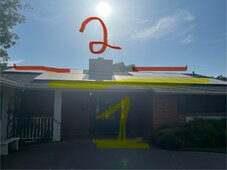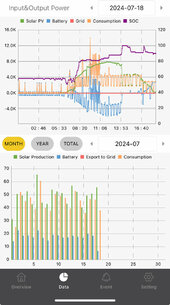We’re finally up and running and have enjoyed the setup thus far, but I need advise on two things, but first, context:
context 1: I’m working with the 18kPV inverter. I have 3 series functioning right now. I have a place on my roof where I’d like to put a 4th series which would run in parallel with the 3rd string.
Context 2: The panels spec sheet is attached.
Context 3: my I am using Tigo 2-for-1 RSD, not optimizers.
Question 1. I separated my series two to account for the immediate shade it would get from the chimney. In the later afternoon my series 1 is then shaded. If I use optimizers on the panels that are shaded in my series 1, would that help account for the late afternoon shading?
Question 2: I purchased my panels from SanTan Solar new but the are not willing to restock that panel. Because my 4th series needs to be identical to the 3rd due to those being paralleled, what advice do yall have on specific panels or configuration? I understand the series need to be identical, but I can’t get them unless i want to buy a whole pallet from Santan’s source.
context 1: I’m working with the 18kPV inverter. I have 3 series functioning right now. I have a place on my roof where I’d like to put a 4th series which would run in parallel with the 3rd string.
Context 2: The panels spec sheet is attached.
Context 3: my I am using Tigo 2-for-1 RSD, not optimizers.
Question 1. I separated my series two to account for the immediate shade it would get from the chimney. In the later afternoon my series 1 is then shaded. If I use optimizers on the panels that are shaded in my series 1, would that help account for the late afternoon shading?
Question 2: I purchased my panels from SanTan Solar new but the are not willing to restock that panel. Because my 4th series needs to be identical to the 3rd due to those being paralleled, what advice do yall have on specific panels or configuration? I understand the series need to be identical, but I can’t get them unless i want to buy a whole pallet from Santan’s source.






